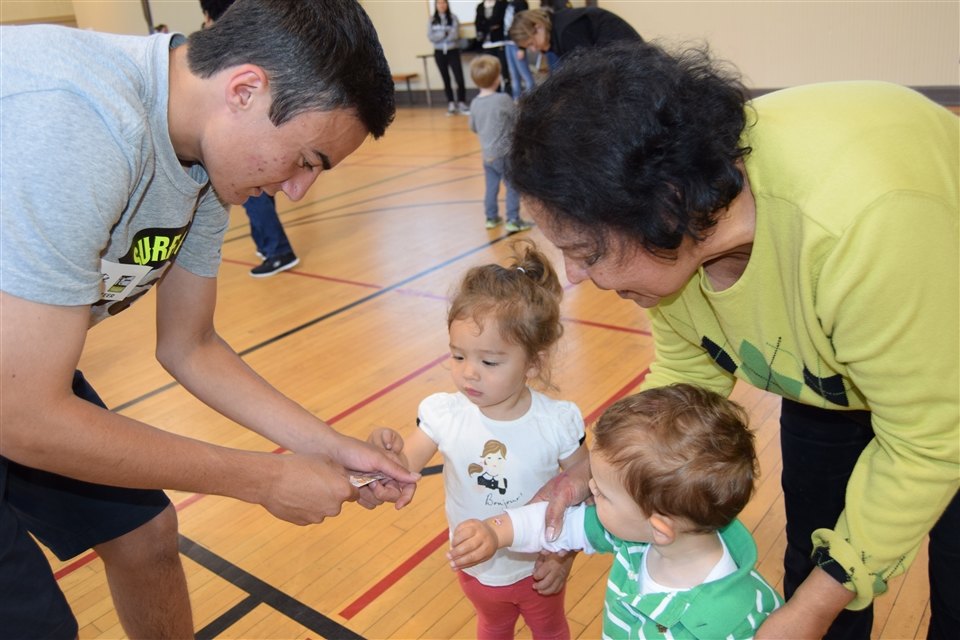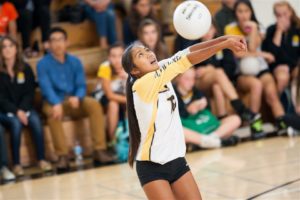This school year marked the beginning of a new and improved Jellis block. The redesign this year involved only ninth and tenth graders. Freshman attended workshops on civic engagement and the importance of volunteering. Sophomores put theory to work; each was required to complete 40 hours of volunteer work.
According to the Public Purpose Program Director Alan Wesson, the new Sophomore Service Program was first conceived by a focus group made up of faculty and staff tasked with rebuilding from the ground up a new “Jellis Block,” now known as the Public Purpose Program. Long before Wesson joined the Lick- Wilmerding staff three years ago there had been discontent with the school’s the style and substance of the school’s volunteer program. “The decision [to create a new Jellis block] has been in the works for years; people were ready for a new approach,” Wesson said.
Wesson and the group wanted to create a program that would be robust and engaging, something that “will fit into people’s lives.” The new program is structured as a tiered system, ideal for students who are at Lick from freshmen year until the end of senior year. The 40 hours that sophomores complete has a specific goal in the program, “The hope is that when you are out there exploring, you will find something you like, something that will capture your heart and that you can build on during your junior and senior years. Maybe through a class offered at Lick, an independent study…. or doing an internship…” As the school gets ready to launch the junior and senior tiers of the new program, Wesson says, “Our hope is that [this new program] will blow Jellis Block away.”
To fulfill my sophomore volunteer requirement, as Wesson hoped, I did find a opportunity that “captured my heart” and which I can continue during my junior and senior years.

In December of last year, I published an article titledSophomoresVolunteerfor a Public Purpose, and in that article I might have mentioned that I had only completed four out of my 40 hours. I think it was actually the process of writing that article that left me with a sinking feeling and somewhat of an “oh, shoot” moment. I really needed to start volunteering and fast.
After doing some research my mom helped me choose the organization 826 Valencia in the Mission, a program aimed at helping under-resourced kids struggling with reading and writing. The program was founded in 2002 by author Dave Eggers and educator Nínive Calegari. 826 Valencia was such a success that under the umbrella organization 826 National, seven more chapters opened in New York, LA, Seattle, Michigan, Chicago, Boston and Washington DC. Other programs patterned after the original 826 Valencia are The Fighting Words Program in Dublin, The Ministry of Stories in London, which was started by author Nick Hornby, and Porto delle Storie in Florence.
When the idea was first being conceived by Eggers and Calegari, they ran into a bump, after being turned away from multiple locations, the pair found an empty store on Valencia Street, with one twist. The city ordinances stated that any businesses in that area of the city had to be retail or catering; thus the 825 Pirate Supply Store was born. The shop, that sells everything from a tin of Mermaid Bait or a Belly of the Whale Escape Kit to Replacement Eyeballs and peg legs, served as a legitimate front for the tutoring program that takes place in the back of the building. The idea of 826 having a theme (pirate!) was a great success. When other chapters started opening they found their own spin on a shop-cum-writing center. New York is home to the Brooklyn Superhero Supply Co., Michigan hosts the Liberty Street Robot Supply and Repair, there is Boston’s Greater Boston Bigfoot Research Institute, Washington is the The Museum of Unnatural History, Chicago decided upon the Boring Store and last but not least LA has The Time Travel Mart. All of these “fronts” are clever and fun ways to make the process of learning more engaging and exciting for kids.
When my mom mentioned 826 Valencia I vaguely remembered that in 5th grade I had been bribed by her to read a book titled Work Hard. Be Nice.: How Two Inspired Teachers Created the Most Promising Schools in America, which mentioned Eggers and Calegari’s success with 826. My line of thinking was something like, “I’m pretty sure I’ve heard that name before…Ok sign me up!” and a month later I was starting my first day as a volunteer for the Buena Vista Horace Mann Creative Writing Program, a satellite site from 826.
The setup at BVHM is unique in that instead of being hosted behind the Pirate Supply Store on the 826 site, the director of the writing program at BVHM, Ashley Varady, and the volunteers meet in a classroom at the Buena Vista Horace Mann School, not at the pirate store. 826 operates in 30 minute shifts from 4-6:30, rotating between 3rd, 4th and 5th graders. Varady feel that this setup is “… an opportunity for us to be able to develop a deeper relationship with the school. We are working with the same kids, we are working with the same teachers. We can make more of an impact.” And that, after all, is the ultimate goal. When working with children, making a positive impact on them is what 826 aims to do and the fledgling creative writing program is most definitely giving these students a boost. “We are looking at their reading levels and scores on writing. We still don’t have the end of the year data but in January, after five months of the program about 67% of the students had already demonstrated more than a year of growth in their reading levels, in less than half a year.”
The idea of actually changing kids idea of writing from something that may be negative, to positive excitement was something that I immediately felt drawn to. Reading and writing have always been two things that I enjoy and I wanted to be able to pass this same joy down to younger students.
However, I found that when working with children who have already been at school for seven to nine hours, more often you’re focusing on keeping them focused, rather than actually writing. There were ups and downs to my first time as a tutor. The first time a student requested I sit at their table (a high), when two students teased me mercilessly and brought me to tears (not one of my proudest moments and a definite low) but one memory stands out vividly. I was working alone with a fourth grader during the 30 minute shift. At first he was reluctant to start writing; then part way through, as I poured my energy into our conversation, he started to nod back at me. He became engaged and during that little window of time we developed our own system for spelling hard words and working on drafting new sentences. By the time the 30 minutes was up I felt like I had run a marathon, I was happy and exhausted. That experience was so rewarding that I felt like I finally understood how someone could dedicate their life to teaching others. I had never experienced a feeling that was so utterly selfless and it left a smile on my face for the rest of the day.






